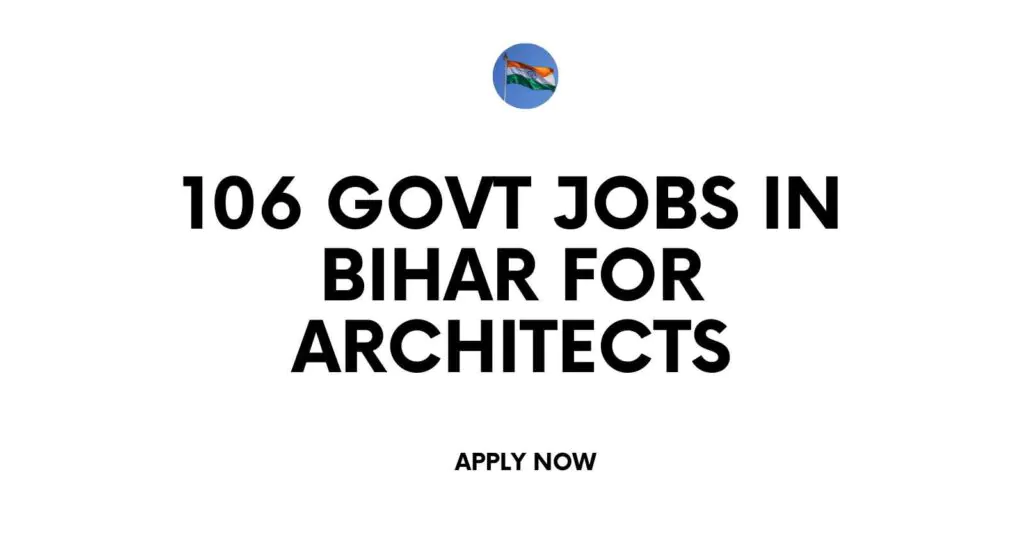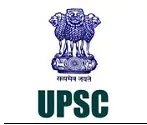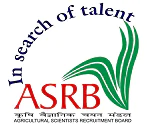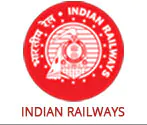Govt job for architects in Bihar has been announced by BPSC, the big gatekeeper for govt jobs in Bihar recently. A total 106 vacancies were announced to be filled after an exam. As you know, BPSC (Bihar Public Service Commission) is the main authority responsible for conducting examinations and recruitment for various civil service positions in the Bihar state – this means the recruitment process will be transparent. So apply before the last date expires.
This also means the previous notification number 08.2022 stands cancelled due to various reasons. And now BPSC vide Advt. No. 23/2024 invites fresh applications for 106 posts of Assistant Architect in the Building Construction Department.

Table of Contents
| Requirement | Details |
|---|---|
| Post name | Assistant Architect |
| Number of vacancies | 106 |
| Pay scale | Level -9 |
| Age | Minimum – 21 yrs Relaxation for women / OBC – 40 yrs for SC/ST – 42 yrs |
Eligibility for the govt job for architects in Bihar
| Educational Qualifications | Bachelor of Architecture and Registration with Council of Architecture, New Delhi |
| Experience | 5 marks (25 max) for every year of contracted work under any private or public sector work |
| Exam pattern | MCQ types of questions for 75 marks; with a negative marking of 1/3 marks |
| Syllabus | click here |
How to apply for this govt job for architects in Bihar
| Official website | click here |
| Start date | 21.02.2024 |
| Last date | 11/03/2024 |
| Job notification | click here |
| Application link | click here | Alternate link 2 |
Exam syllabus of the govt job for architects in Bihar
Architecture: Section 1: Architecture and Design
Visual composition in 2D and 3D; Principles of Art and Architecture; Organization of 5pdce; Architectural Graphics; Computer Graphics- concepts of CAD, BIM, 3D modeling and Architectural rendition; Programming languages and automation. Anthropometrics; Planning and design consideratidns for different building types; Site planning; Circulation- horizontal and vertical; Barrier free design; Space Standards; Building Codes; National Building Code.
Elements, construction, architectural styles and examples of different periods of Indian and Western History of Architecture; Oriental, Vernacular and Traditional architecture; Architectural developments since Industrial Revolution; influence of modern art on architecture; Art nouveau, Eclecticism, International styles, Post Modernism, Deconstruction in architecture; Recent trends in Contemporary Architecture; Works of renowned national and international architects.
Section 2: Building Materials, Construction and Management
Behavioral characteristics and applications of different building materials viz. mud, timber, bamboo, brick, concrete, steel, glass, FRP, AAC, different polymers, composites.
Building construction techniques, methods and details; Building systems and prefabrication of building elements:. Principles of Modular Coordination; Estimation, specification, valuation, professional practice; Construction planning and equipments; Project management techniques e.g. PERT, CPM.etc;
Section 3: Building and Structures
Principles of strength of materials; Design of structural elements in wood, steel and RCC; Elastic and Limit State design; Structural systems in RCC and Steel; Form- and Structure; Principles of Pre-stressing; High Rise and Long Span structures, gravity and lateral load resisting systems; Principles and design of disaster resistant structures.
Section 4: Environmental Planning and Design
Ecosystem- natural and man-made ecosystem; Ecological principles; Concepts Environmental Impact Analysis; Environmental considerations in planning design; Thermal comfort, ventilation and air movement; Principles of lighting gi illumination; Climate responsive design; Solar architecture; Principles of archltecit6, acoustics; Green Building- Concepts and Rating; ECBC; Building Performd, Simulation and Evaluation; Environmental pollution- types, causes, controls 4 abatement strategies.
Section 5: Urban Design
Concepts and theories of urban design; Public Perception; Townscape;:, Realm; Urban design interventions for sustainable development and tranSpIll Historical and modern examples of urban design; Public spaces, charactOr’,1 qualities and Sense of Place; Elements of urban built environment – urb411 spaces, structure, pattern, fabric, texture, grain etc; Principles, fools and tr of urban design; Urban renewal and conservation; Site planning; 1..di design; Development controls – FAR, densities and building byelaws.
Section 6: Urban Planning and Housing
Planning process; Types of plans – Master Plan, City Development Plan, Structure Plan, Zonal Plan, Action Area Plan, Town Planning Scheme, Regional Plan; Salient concepts, theories and principles of urban planning; Sustainable urban development; Emerging concepts of cities – Eco-City, Smart City, Transit Oriented Development (TOD), SEZ, SRZ etc.
Housing; Concepts, principles and examples of neighborhood; Housing typologies; Slums; Affordable Housing; Housing for special areas and needs; Residential densities; Standards for housing and community facilities; National Housing Policies, Programs and Schemes.
Section 7: Planning Techniques and Management
Tools and techniques of Surveys – Physical, Topographical, Landuse and Soda-economic Surveys; Methods of non-spatial and spatial data analysis; Graphic presentation of spatial data; Application of G.1.S and Remote Sensing techniques iri urban and regional planning; Decision support system and Land information System.
Urban Economics; Law of demand and supply of land and its use in planning; ‘,- Social, Economical and environmental cost benefit analysis; Techniques of financial: appraisal; Management of infrastructure Projects; Development guidelines such as URDPFI; Planning Legislation and implementation – Land Acquisition Act, PPP etc. Local self-governance.
Section 8: Services, Infrastructure and Transportation
Building Services: Water supply; Sewerage and drainage systems; Sanitary fittings and fixtures; Plumbing systems; Principles of internal and external drainage system; Principles of electrification of buildings; Intelligent Buildings; Elevators and Escalators – standards and uses; Air-Conditioning systems; Firefighting Systems; Building Safety and Security systems.
Urban Infrastructure – Transportation, Water Supply, Sewerage, Drainage, Solid Waste Management, Electricity and Communications.
Process and Principles of Transportation Planning and Traffic Engineering; Road capacity; Traffic survey methods; Traffic flow characteristics; Traffic analyses and design considerations; Travel demand forecasting; Land-use – transportation urban form inter-relationships; Design of roads, intersections, grade separators and parking areas; Hierarchy of roads and level of service; Traffic and transport management and control in urban areas,; Mass transportation planning; Para-transits and other modes of transportation, Pedestrian and slow moving traffic planning; Intelligent Transportation Systems.
Principles of water supply and sanitation systems; water treatment; Water supply and distribution system; Water harvesting systems; Principles, Planning and Design of storm water drainage system; Sewage disposal methods; Methods of solid waste management – collection, transportation and disposal; Recycling and Reuse of solid waste; Power Supply and Communication Systems, network, design and guidelines.
About the organization
This govt job for architects in Bihar caters to the Building Construction Department (BCD) which plays a crucial role in the development and maintenance of government buildings. It oversees the construction, renovation, upgrading, and maintenance of both residential and non-residential government buildings in Bihar.
Some facts about Bihar’s spending on construction
Budget Allocation for Construction and Maintenance:
- In the fiscal year 2024-25, the Bihar government has allocated significant funds for various construction and development activities:
- Road Construction and Maintenance: Rs. 15,235 crore.
- Health Sector: Rs. 14,932 crore.
- Rural Development: Rs. 14,296 crore.
- Welfare Schemes: Rs. 12,377 crore.
- Urban Development: Rs. 11,298 crore.
- Strengthening of Panchayati Raj Institutions: Rs. 11,025 crore.




